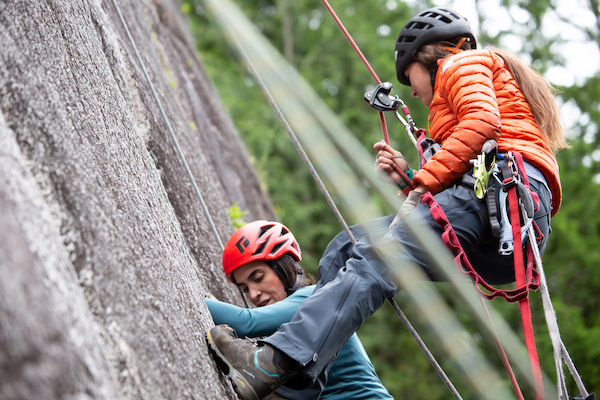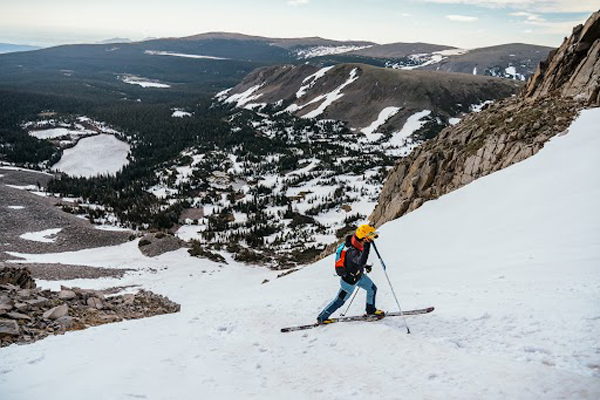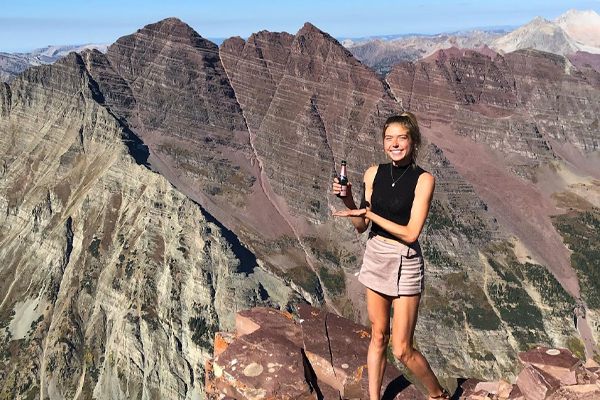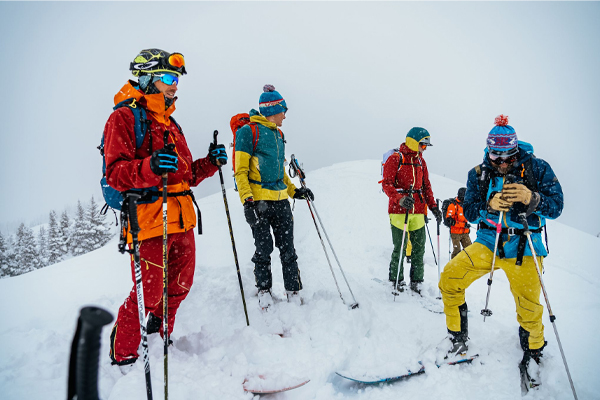Tino Villanueva - Trusted Boots for Alpine Ascents

Besides guiding, Tino searches out new lines to add to a long list of climbing FAs and ski descents.
- - -
In early October, I stood on top of an unclimbed peak with my long-time climbing partner, Alan Rousseau, in the northern Indian state of Jammu and Kashmir. After winning the Copp-Dash Inspire Award, supported by La Sportiva, we had traveled to this unexplored zone in the Indian Himalaya to attempt our peak objective, the 6,495-meter Rungofarka. In 2009, after years of conflict and a de-escalation of tensions in the area, 100 peaks in Jammu and Kashmir were opened to climbing in an effort to encourage the return of tourism to the region. Rungofarka was among these newly-opened peaks; from the lack of information available, we could only conclude it was unclimbed. The few photos available online showed an aesthetic pyramid-shaped rocky peak streaked with ice runnels and featuring a steep ridge, a combination that provided for beautiful alpine climbing.
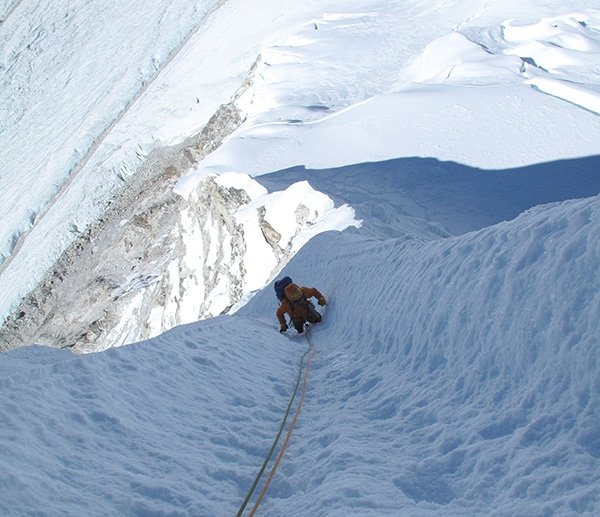
Alan Rousseau stems up collapsing snow flutes while climbing the NW Ridge of Langmoche Ri, Nepal. After 500m of climbing near-vertical snow with make-believe anchors, this climb earned its X rating.
I have been using La Sportiva boots for over a decade, both as a mountain guide and for terrifying vacations personal expeditions. For the majority of that time, my boot of choice for technical alpine climbing over 5,000 meters was the Spantik- a boot that far exceeded the warmth, weight and performance of the double plastic boots common at the time of its introduction to the market in 2006. I trusted the Spantik on a number of expeditions, including a 2007 expedition to China and two expeditions to the Nepali Himalaya (in 2012 and 2014) with Alan. When it came to warm boots that could also climb, the Spantik boots were the only choice in my book.

Halfway up Pachermo, in the Rolwaling Himal of Nepal, Tino leads a pitch of ice amongst a lot of mixed terrain.
One of my first alpine climbing expeditions abroad was to Western China – Siguniang Shan (6,250m). Inspired by Mick Fowler and Paul Ramsden’s first ascent of the mountain’s north wall, I traveled with a friend from my college days to attempt the southeast ridge in alpine style. Our efforts were plagued by dry conditions, with no ice to cover the shale-like rock. Though the climbing was a horror show, the Spantiks performed like champs, especially in the steep snow and moderate ice we were able to climb. We were dirtbag climbers on a shoestring budget- no established base camp and no porter train to haul in our month’s worth of supplies- but the Spantiks, with their rockered soles, did a passable job hauling multiple loads to base camp, over miles of muddy horse trails, steep bushwacking and talus scrambling.
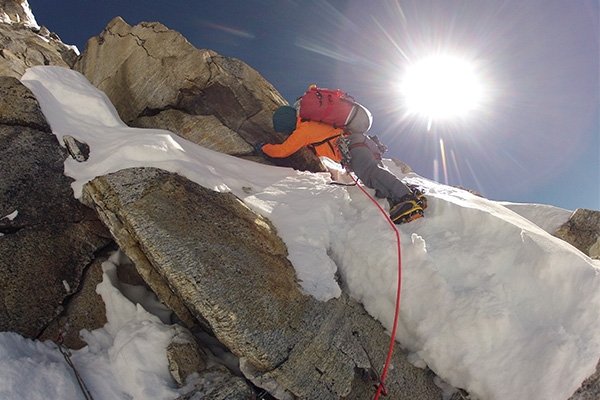
Entering into mixed terrain on Pachermo. We encountered high quality alpine terrain on Pachermo, dubbing one section the "Chamonix Runnel" for its resemblance to the classic north faces of granite and ice.
Fast forward to Nepal in 2012, when Alan and I established a handful of first ascents in the Rolwaling Valley- five years later, Spantiks were still the only tool for the job. We climbed a lot of terrain on that trip, completing a first peak ascent of Langmoche Ri (6,611m) and establishing a handful of new waterfall ice routes around the Rolwaling Valley. We returned in 2014 and scored a new route on the west face of Pachermo (6,275m). On this particular trip, the years of sizing down my ski boots and rock shoes for the “performance fit,” and a lot of days with frozen feet on big mountains, caught up with me. Still living the dirtbag climber life, but this time settling in to base camp at 5,500m in November, it was COLD. On our attempt of the 6,938-meter Tengi Ragi Tau, my feet were so numb that I had to remove my boots on route in order to get the blood flowing; luckily, Alan’s armpits were extremely warm.
The Spantik had been my go-to boot for many years but after our attempt on Tengi Ragi Tau, I started wondering whether there was a warmer option. While other La Sportiva boots received updates and were released in an EVO model, the Spantik remained the same. I hoped and waited for a Spantik EVO: a high-altitude alpine climbing boot with an integrated gaiter and added warmth. If it could still climb well while being lighter-weight, it would truly be the holy grail of climbing boots. This year I got just that boot: the G2 SM.
Product Video: Steve House Reviews the G2 SM
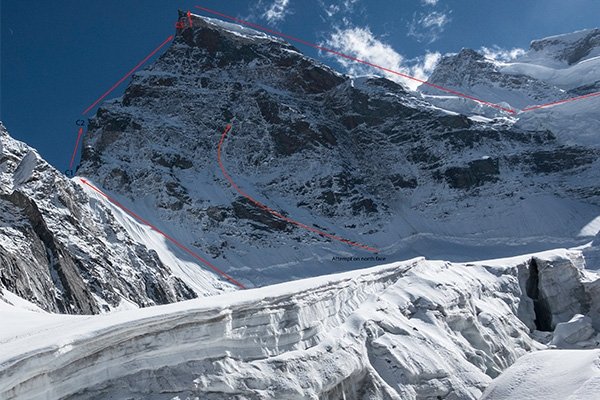
Rungofarka (6,495m) Route Overview
Launching up the north ridge of Rungofarka, it was brutally apparent that when the sun was hidden behind the ridge, it would be cold. Gaining the ridge involved climbing 300 meters of AI 3 and wallowing up steep, thigh-deep snow, but the features of the G2 SM provided the solution. The integrated gaiter, outer boot-inner boot system delivered superior warmth with no need for gaiters or rigging a snow seal with climbing pants; the gaiter of the G2 SM allowed me to tuck my pants into the boot for a streamlined, snow-proof solution. At the bivy on our first night, I also noticed it was easier, thanks to the gaiter, to clean the boot of snow before bringing it inside the tent.
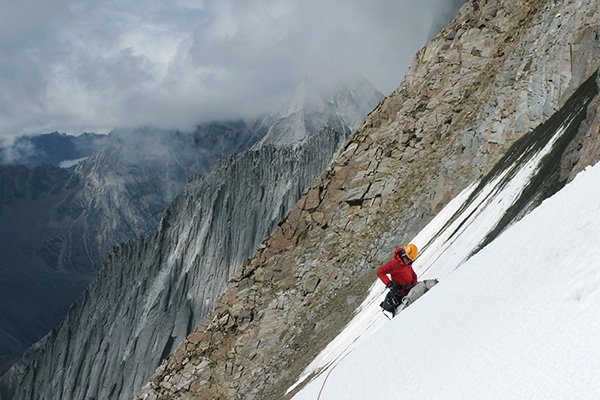
Dave Campbell climbing the SE Ridge of Siguniang in Sichuan, China.
The following days on route, and endless rocky mixed terrain, tested the boot’s climbing abilities. The variety of alpine terrain encountered during our 50-pitch, five-day ascent of Rungofarka provided a great test of the G2 SM's capabilities. Four days on route saw us traveling through mixed runnels, chimneys, cracks, snowy knife-edged ridges, slabs, and pitches of ice that led us to the summit of Rungofarka. At times the climbing was slow and tenuous, but the G2 SM performed amazingly well. The reduction in weight, compared to the Spantik, was noticeable and welcome at 6,000 meters, where it was a fight for every inch of progress. At difficulties up to WI4+ M6, the G2 SM were more than up to the task.
Preview & Photo 1: © Tino Villanueva,
Photos 2,4 & 5: © Alan Rousseau
- - -
ABOUT THE AUTHOR
 Tino Villanueva is an IFMGA/UIAGM mountain guide who spends the year traveling to climb and ski.
Tino Villanueva is an IFMGA/UIAGM mountain guide who spends the year traveling to climb and ski.
- - -





